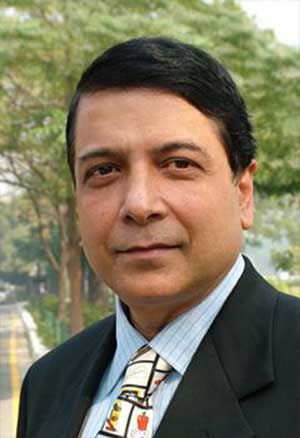A Conversation with Pravin Sawhney

06/02/2011 – In Mid-May, Second Line of Defense sat down with Pravin Sawhney, editor of Force Magazine, the highly regard Indian monthly on national security and defense. Sawheny provided his interpretation of the decision to downselect European aircraft and its potential impacts.
Sawney: This competition is worth easily about $10 billion and more, and as rightly pointed out as we were going through this competition, that it is more than a platform. It’s about building relationships between the nations.
In the downselect, both American aircrafts are out of the race. The Indian Air Force has made it very clear that is a core combat platform. The key word is “combat.” We’ll use it against Pakistan if a war breaks out, and the Air Force is not really sure about a guaranteed product support if they chose the U.S. platform.
SLD: And that’s because of the past embargoes?
Sawhney: No. It is because U.S. has as much as a relationship with India as it has with Pakistan.
In case of a war, the apprehension in the Indian Air Force was that we might just be denied the product support at that critical juncture when we need it.
SLD: And so, put simply here, if the Indian Air Force was asked by the Indian government to defend Indian interests against Pakistan, there is concern that the U.S. would be in the position to make the ultimate decision?
Sawhney: Exactly. And the second point was what sort of a technology can the U.S. really give us. Because, as you know, U.S. is one country, and rightly so from their perspective, they have a lot of agreements that need to be signed before defense cooperation can commence and the length and depth of that relationship then discussed.
India has its own sensitivity about signing these agreements. I think the reason is that because we have never signed such agreements with any country, any major party that we have dealt with, so, there is sensitivity about where exactly will we end up with the Americans if we sign this.
What sort of technology can be given, we were not sure.
And the third reason I would say is that, see, this aircraft that we buy today stays with us for 35, 40 years. So, what sort of upgrades can we do? Will the Americans help us in those upgrades, or not help us in those upgrades? That was another apprehension. So, the long and short is, right now we have the Eurofighter and we have the Rafael in the race.
SLD: What happens next?
Sawhney: There are three quick processes that they have to go through. There is a commercial bid and there is an offset bid, and then there is talk about transfer of technology, what can be done and how it will be done. And, of course, after that, we need a final price, L1, as we call it. Again, as far as L1 is concerned, I don’t think it is sacrosanct because all these things, the offset, the technology, they all will play a very important role. Life cycle costs, these all are very important things.
We are at a stage now where I would personally say when you talk of this Eurofighter consortium; you are basically talking of two big countries. You’re talking of Germany and you’re talking of UK. So, what sort of cooperation they have within themselves? Can they even meet at the target of the AESA radar? Because as we understand, that there is a slippage in the government’s funding of this radar. Can they meet the 2013 deadline when they want the AESA to be operational?
But the long and short is as of now, it looks like that the Indian government and the Indian Air Force, they are very keen that they sign this at the earliest, this agreement. And I would say that by September this contract should get signed.
SLD: What could be the impact on building a new manufacturing capability in India and what are the prospects for this bargain really creating a new capability in the market space of an Indo-European capability? What’s your thought about that?
Sawney: We have had decades of cooperation, both with the French as well as with the UK. So, these are the countries that are known. These are the countries that have given us combat aircraft. We know what they can give and the time frame in which they can give it. I think it will be a slow process, and more so, not for what they can give us; equally so, for how much and in what time frame we can absorb the technology that they can give us; how we can build up the infrastructure and in what time frame.
But, again, to make that basic point that India has worked with these countries on a combat aircraft in the past and that is important to India.

